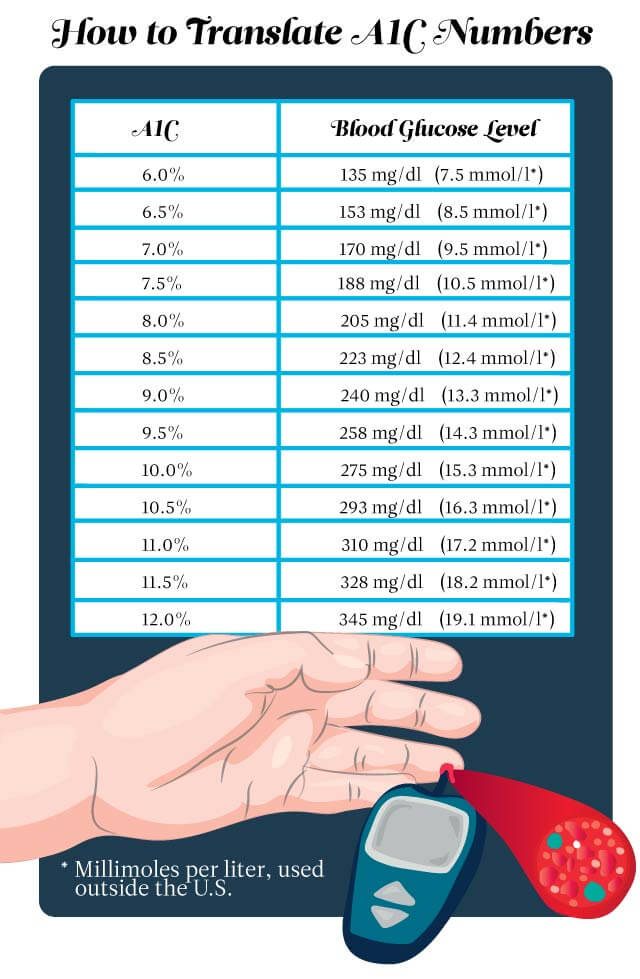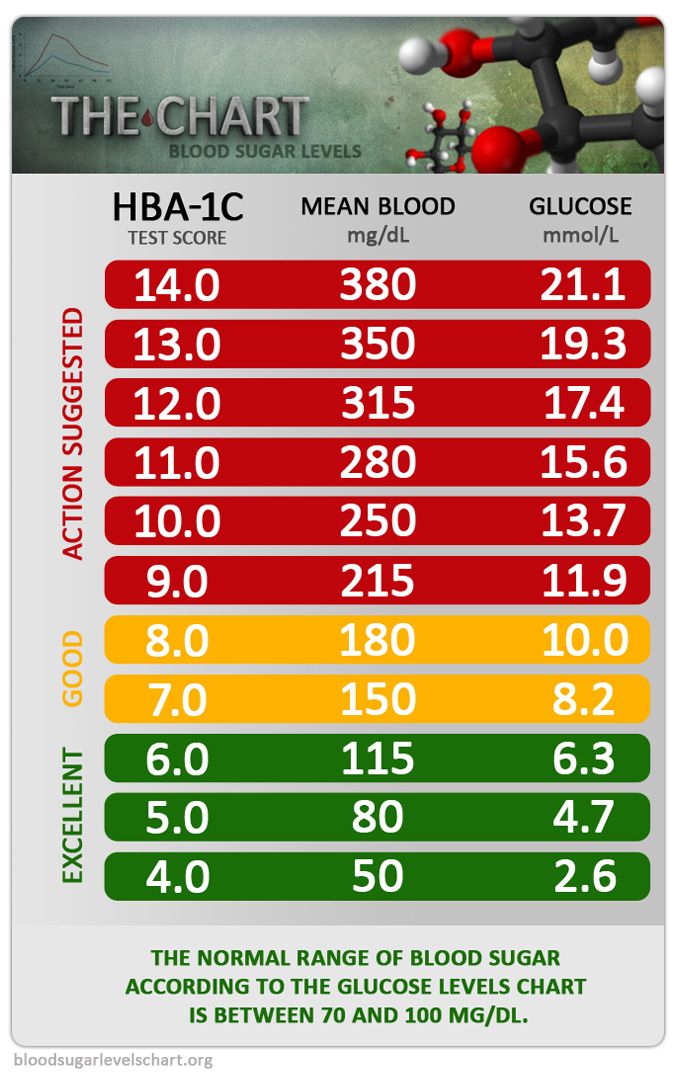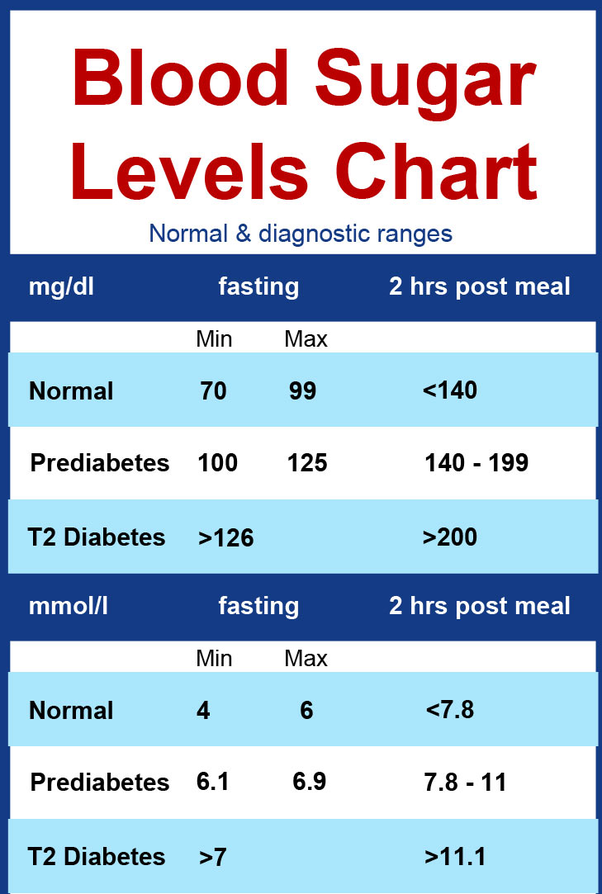Normal Blood Sugar Levels Chart For Diabetic Adults Age Wise
| Chart of Normal Blood Sugar Levels for Diabetic Adults |
|---|
| Age |
| 100 to 140 mg/dL |
Healthy blood sugar levels in diabetic adults age wise:
Summary
Healthy diabetic adults should maintain a blood sugar level of 70 to 130 mg/dL before meals and less than 180 mg/dL after 2 hours of meals. Pregnant women should maintain a blood sugar level of 95-140 mg/dL to avoid complications. This can be done with the right habits in place that help you maintain your sugar level without getting stressed about it.
When Things Go Awry
When we eat food, the pancreas goes to work, releasing enzymes that help to break down food and hormones that help the body handle the influx of glucose. One of these hormones is insulin, and it plays a key role in managing glucose levels in the blood.
And here is where things can go wrong. If the pancreas doesnt make enough insulin or stops making it altogether, in the case of type 1 diabetes glucose levels in the blood can rise too high. Another scenario is that the pancreas makes enough insulin but the cells have trouble using it properly, causing blood glucose levels to rise. This is called insulin resistance and is the hallmark of type 2 diabetes.
In the short term, high blood glucose levels can make you feel downright bad. Thirst, frequent trips to the bathroom, fatigue and weight loss are all symptoms of high blood glucose . If not treated, more serious issues can occur, such as diabetic ketoacidosis. Chronic high blood glucose levels can lead to complications such as heart, kidney and eye disease, as well as nerve damage. So, its all about the blood glucose.
When Should You Check Your Blood Sugar Levels
Its important that people who suspect they have diabetes or pre-diabetes monitor their glucose levels regularly, checking at least once daily and charting the results in order to know what is normal for themselves. If it seems like something isnt quite right with ones blood glucose. It may be time to talk to a doctor about getting a diabetes diagnosis. Its also important that parents make sure their children are well aware of any symptoms of high or low blood sugar. So they know when they need to alert an adult about what might be going on if their parents are not around.
Also Check: Metformin With Or Without Food
Can I Check My Own Blood Sugar
You can do blood sugar level check by doing a finger-prick test, by using a blood sugar monitor called a flash glucose monitor or with a continuous glucose monitor . You can do this several times a day helping you keep an eye on your levels as you go about your life and help you work out what to eat and how much medication to take. Find out your ideal target range.
Not everyone with diabetes needs to check their levels like this. Youll need to if you take certain diabetes medication. Always talk to your healthcare team if youre not sure whether thats you theyll give you advice on whether to check them yourself and how often.
And theres also something called an HbA1c, which is a blood test to measure your average blood sugar level over the last three months. Everyone with diabetes is entitled to this check.
High blood sugar levels increase your risk of developing serious complications. However you manage your diabetes, stay in the know about your blood sugar levels
Talk To Your Doctor Or Nurse

If you use insulin and your blood sugar is frequently or consistently low, ask your doctor or nurse if you:
- Are injecting your insulin the right way
- Need a different type of needle
- Should change how much insulin you take
- Should change the kind of insulin you take
DO NOT make any changes without talking to your doctor or nurse first.
Sometimes hypoglycemia can be due to taking the wrong medicines. Check your medicines with your pharmacist.
Read Also: Which Cells Produce Hormones To Regulate Blood Sugar
Read Also: How Do You Know If Your Sugar Is High
High Blood Sugar: Hidden Dangers
In the short term, high blood sugar levels can zap your energy, cause excessive thirst and urination, and blur your vision. High blood sugar levels can also lead to dehydration, dry and itchy skin, and infections. Minimizing the time spent above your target blood sugar range can help you feel your best and will help prevent complications and injury to your body.
Over time, high blood sugar affects many parts of the body. Chronic high blood sugar can start to cause noticeable changes, including:
- Memory problems
- Vision problems like blurriness, diabetic retinopathy, and blindness
- Gum disease that leads to tooth loss, which can make eating healthy foods difficult due to problems chewing
- Heart attack and stroke due to increased plaque build-up in the vessels and other vascular issues
- Kidney disease, which can lead to the need for dialysis or a kidney transplant
- Nerve damage that can cause decreased sensation in the feet and legs which increases the risk for wounds to turn into serious infections and even amputation
Nerve damage from high blood sugar can also cause a variety of symptoms including:
- Pain and tingling in the feet and hands
- Difficulty emptying your bladder
- Problems during the digestion process after eating, which can cause food to sit in the stomach too long and lead to nausea, vomiting, and erratic blood sugar levels
Checking your blood sugar frequently and taking immediate action when it is above range can reduce your risk of complications.
Blood Sugar Levels After Eating
Blood sugar fluctuates throughout the day, but the biggest changes happen around mealtimes. Before eating, a healthy sugar level is between 3.9-5.5mmol/L. Around 1-2 hours after eating, expect blood sugar to rise to 5-10mmol/L.
If your blood sugar doesn’t stick within these ranges, the body may have stopped regulating blood sugar effectively which can lead to prediabetes and diabetes.
Also Check: Management Of High Blood Sugar
What Is Diabetic Ketoacidosis
If you think you may have low blood sugar, check it even if you dont have symptoms.
When too many ketones are produced too fast, they can build up in your body and cause diabetic ketoacidosis, or DKA. DKA is very serious and can cause a coma or even death. Common symptoms of DKA include:
- Fast, deep breathing.
- Nausea and vomiting.
- Stomach pain.
If you think you may have DKA, test your urine for ketones. Follow the test kit directions, checking the color of the test strip against the color chart in the kit to see your ketone level. If your ketones are high, . DKA requires treatment in a hospital.
DKA happens most in people with type 1 diabetes and is sometimes the first sign of type 1 in people who havent yet been diagnosed. People with type 2 diabetes can also develop DKA, but its less common.
Check Your Blood Sugar Often
Checking your blood sugar levels often and writing down, or using an app to track the results will tell you how well you are managing your diabetes. Talk to your doctor and diabetes educator about how often you should check your blood sugar.
- Not everyone with diabetes needs to check their blood sugar every day. But some people may need to check it many times a day.
- If you have type 1 diabetes, check your blood sugar at least 4 times a day.
Usually, you will test your blood sugar before meals and at bedtime. You may also check your blood sugar:
- After you eat out, particularly if you have eaten foods you don’t normally eat
- If you feel sick
- Before and after you exercise
- If you have a lot of stress
- If you eat too much
- If you are taking new medicines that can affect your blood sugar
Keep a record for yourself and your provider. This will be a big help if you are having problems managing your diabetes. It will also tell you what works and what doesn’t work, to keep your blood sugar under control. Write down:
- The time of day
- The amount of carbohydrates or sugar you ate
- The type and dose of your diabetes medicines or insulin
- The type of exercise you do and for how long
- Any unusual events, such as feeling stressed, eating different foods, or being sick
Many glucose meters let you store this information.
You May Like: What Color Is The Diabetes Awareness Ribbon
Prevent Type 2 Diabetes
If your test results show you have prediabetes, ask your doctor or nurse if there is a lifestyle change program offered through the CDC-led National Diabetes Prevention Program in your community. You can also search for an online or in-person program. Having prediabetes puts you at greater risk for developing type 2 diabetes, but participating in the program can lower your risk by as much as 58% .
Levels After Youve Eaten
Many foods have types of carbohydrates called starches and sugars. When you eat foods with these types of carbohydrates, your body breaks them down into glucose, which is a type of simple sugar, and releases the glucose into your bloodstream. Aside from glucose produced by your liver, food is the main source of plasma glucose.
Two hours after eating, your blood sugar levels rise. They rise more when you eat more carbohydrates, when you do not eat fiber, fat, or protein with your carbs, and when you eat certain types of carbohydrates, such as refined sugars and starches.
These are target values from The Joslin Diabetes Center, which include levels for people with diabetes:
| When Measured |
|---|
You May Like: How Long Does It Take To Lower Blood Sugar
Other Tips For Checking:
- With some meters, you can also use your forearm, thigh, or fleshy part of your hand.
- There are spring-loaded lancing devices that make sticking yourself less painful.
- If you use your fingertip, stick the side of your fingertip by your fingernail to avoid having sore spots on the frequently used part of your finger.
Why Test Blood Sugar Levels

If you take certain medication, like insulin or sulphonylureas, checking your blood sugars is a vital part of living with diabetes. It can help you work out when you need to take more medication, when you need to eat something or for when you want to get up and move around more.
Routine checks can help you know when you might be starting to go too low or too high . Its a way of getting to know your body and how it works. It can help you and your healthcare team spot patterns too. Do you write your results down? You might find that helpful.
But importantly, it will help you stay healthy and prevent serious diabetes complications now and in the future. By complications, we mean serious problems in places like your feet and your eyes. This happens because too much sugar in the blood damages your blood vessels, making it harder for blood to flow around your body. This can lead to very serious problems like sight loss and needing an amputation.
The higher your blood sugar levels are and the longer theyre high for, the more at risk you are.
You May Like: What Is Metformin 500mg Used For
Do You Have To Fast For An A1c Blood Test
Unlike the fasting plasma glucose and the OGTT tests, there is no need to fast before having the A1C test. If A1C test results indicate a person has or might have diabetes, a healthcare provider might suggest one of these tests to confirm the results. Another test, the random plasma glucose test, which does not require fasting, can also be used. If the results are borderline or if the results of the different tests do not match, a doctor might suggest repeating the test in several weeks or months.
What Levels Of Blood Sugar Are Dangerous
Human bodies are wonderfully complex organisms, sometimes to a fault. Its really hard to say exactly what levels of blood sugar are dangerous unless they are really dangerous.
What we mean by that is healthy individuals can have glucose levels ranging from 60ish to about 140. Things start to get bad when you exceed these number, but symptoms might not become apparent until youve reached really dangerous territory. Thats why its important to measure.
Don’t Miss: Is Milk At Night Good For Diabetes
Fasting Plasma Glucose Test
A fasting plasma glucose test is taken after at least eight hours of fasting and is therefore usually taken in the morning.
The NICE guidelines regard a fasting plasma glucose result of 5.5 to 6.9 mmol/l as putting someone at higher risk of developing type 2 diabetes, particularly when accompanied by other risk factors for type 2 diabetes.
Remedies For Low Blood Sugar Levels
If you experience any of the low sugar symptoms, immediately test your blood glucose levels. For levels between 60 to 80 mg/dL, consume 15 grams of fast-acting carbs. Repeat the test after 15 minutes and eat till sugar levels settle to normal.
But if the levels are below 50 mg/dL and if the patient is conscious and able to eat, give 15 gm. of fast-acting carbs. But if the patient is unable to speak, dont give anything to eat. Call emergency services immediately. If possible, administer glucagon via injection.
You May Like: Adverse Reactions To Metformin
What You Can Drink With Meals
Add a low-calorie, low-sugar drink or choose water. Proper hydration is essential to helping your body remove excess sugar.
Some drinks that are good for keeping your blood sugar level low include:
- Unsweetened tea
- Unsweetened coffee
- Sparkling water or club soda
- Flavored water or sparkling water without added sugar
- Diet soda or other diet drinks
Can You Have High A1c And Not Be Diabetic
According to one 2009 study, 3.8% of people without a history of diabetes have an elevated A1C level . This group is more likely to have other risk factors for Type 2 diabetes and cardiovascular disease. Researchers found that the following groups were more likely to have an elevated A1C without having a diagnosis of diabetes:
- Older
- Obesity
- Higher C-reactive protein levels
A high A1C result might signal that there is a problem. Even a modest increase in your blood sugar, above normal levels, can increase your risk of heart disease, even when you dont have full-blown diabetes, says Dr. Bellatoni. A physician can review test results and talk to patients about risk factors and lifestyle changes to improve blood sugar levels.
Don’t Miss: Glyburide Metformin Warnings
Are Some Canadians At Higher Risk For Elevated Blood Sugar Levels Than Others
You may have a higher risk for elevated blood sugars and type 2 diabetes if you:
- Are 40 or years of age or older
- Have a close relative with diabetes
- Are of African, Arab, Asian, Hispanic, Indigenous or South Asian descent
- Are overweight
- Have been diagnosed with prediabetes
Some medical conditions can also increase your risk of type 2 diabetes, such as:
- High blood pressure or cholesterol levels
- Polycystic ovary syndrome
- Psychiatric disorders
- Sleep apnea
Symptoms Signs Causes Of Levels Of High Blood Sugar In The Blood

High blood sugar or hyperglycemia is an abnormally high blood sugar level in the blood. Hyperglycemia is a hallmark sign of diabetes and prediabetes.
Signs and symptoms of hyperglycemia include blurred vision, headaches, hunger, and …
The normal ranges for blood sugar levels in adults who do not have diabetes before eating or fasting the range begins at 72-99mg/dL while fasting ranges for those being treated for type 1 or type 2 diabetes range from 80 -130 mg/dL. According to the American Diabetes Association normal blood sugar levels before and after eating should be 80-130 mg/dL before eating a meal , and less than 180 mg/dL about 1-2 hours after eating a meal
High blood sugar ranges for people who dont have diabetes begins at 140 mg/dL or greater while for those being treated for diabetes, the high range begins at 180 mg/dL , called hypoglycemia.
Read Also: What Is The Lowest Dose Of Metformin You Can Take
Recommended Blood Sugar Targets
For people with type 1 diabetes, the American Diabetes Association recommends that blood sugar targets be based on a person’s needs and goals. Talk to your doctor and diabetes educator about these goals. A general guideline is:
Before meals, your blood sugar should be:
- From 90 to 130 mg/dL for adults
- From 90 to 130 mg/dL for children, 13 to 19 years old
- From 90 to 180 mg/dL for children, 6 to 12 years old
- From 100 to 180 mg/dL for children under 6 years old
After meals , your blood sugar should be:
- Less than 180 mg/dL for adults
At bedtime, your blood sugar should be:
- From 90 to 150 mg/dL for adults
- From 90 to 150 mg/dL for children, 13 to 19 years old
- From 100 to 180 mg/dL for children, 6 to 12 years old
- From 110 to 200 mg/dL for children under 6 years old
For people with type 2 diabetes, the American Diabetes Association also recommends that blood sugar targets be individualized. Talk to your doctor and diabetes educator about your goals.
In general, before meals, your blood sugar should be:
- From 70 to 130 mg/dL for adults
After meals , your blood sugar should be:
- Less than 180 mg/dL for adults

